
-Just Me [In my 30s going on eternity] (A Random Rambling Wordy Nerd and an appreciator of all forms of artistic expression) Being Me- Art, Books, Fantasy, Folklore, Literature, and the Natural World are my Jam.
249 posts
Latest Posts by thegreenkeeper - Page 6
These look great, I love fairy tales and folklore.



I’m going to read so many fairy tales
I'm not sure if I should be amazed or worried by how far animatronics have come as far as realism goes. If they can make entertainment robots be so animated and move realistically, whose to say they haven't already made some for more "productive" purposes...

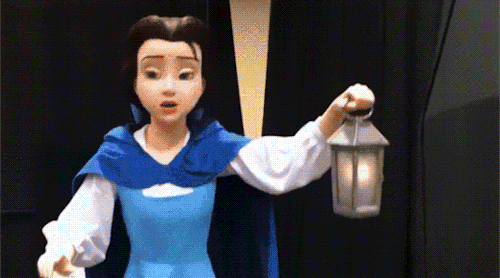
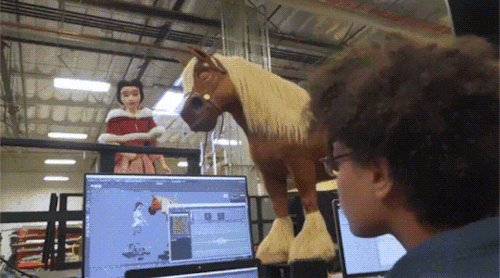
it took me like 3 minutes to process the fact that this wasnt cgi
What a creative way to display a painting; it really takes you on a journey as if you were on an airplane.








True.. true..

Who knew, Disney was well versed in the misunderstood art of punnery.
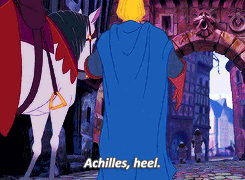









#punny
Mmmmmmmmmm.....

M&M Oreo Cookie Bars
Loved this film!
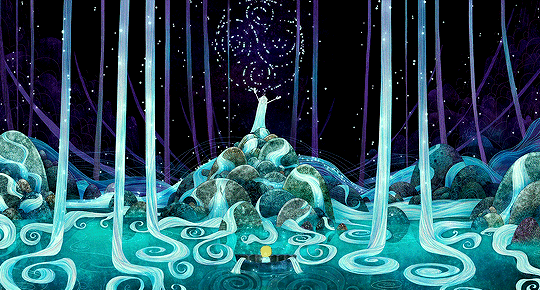

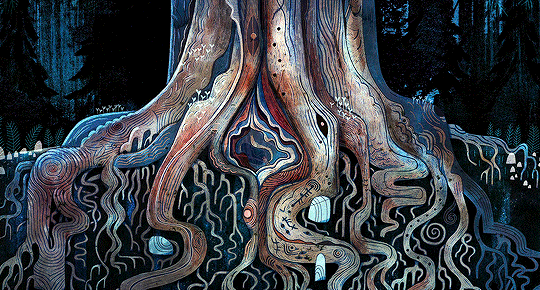
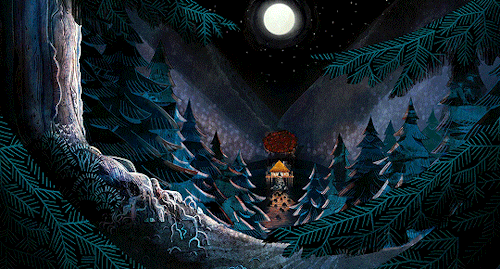
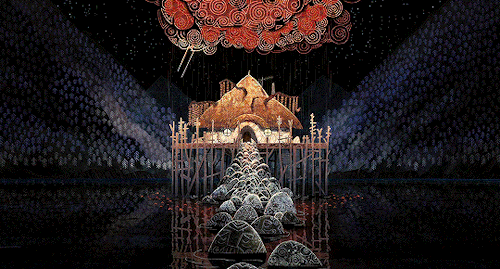


Song of the Sea (2014) Dir. Tomm Moore
Love celtic/Gaelic folklore
Faerie List
Alvens: These are Water faeries who float around on bubbles and hate fish. During a full moon, they come on land to dance and play. They are not particularly friendly.
Amadan Dubh: This is a particularly dangerous type of faery that is greatly feared among the Gaels. They are known as the “fairy fools,” and the bringers of madness and oblivion. They play faery enchantments on their reed pipes on hilly slopes and precipices after sunset.
Banshee: The name “banshee” means a woman of the faery. It corresponds to the “Fear Sidhe” or faery man. The wild banshee wanders through the woods and over the moors at dusk, and some- times lures travelers to their death. Banshee can also travel at will to great distances. Appearing in tattered gray clothes, they are basically a sociable faeries who have become solitary through sadness and grief. They are the honor- able ancestral faery women of the old clans of Ireland, who are heard, but rarely seen. They wail a blood-curdling lament just before mis- fortune, illness, or death occurs in their ancestral families. Their wail can kill or instantly age mortals who hear it. Banshee also avenge the death of their descendants. They generally appear either as beautiful maidens or gruesome crones. Salt water and silver can harm them.
Bendith Y Mamau: They have the ill disposition and ugly appearance of goblins, but the glamour of the faeries. Living in underground caverns, they don’t care very much for mortals and they have been know to steal cattle and children, to kill farm animals, and to break important tools.
Billy Blin: A household familiar who is popularized in English and Scottish songs.
Boggart: They are known for breaking things and making trouble, but seldom do serious harm. Most old homes have a boggart. The supernatural boggart is sly, annoying, mischievous, and a prankster. They pull the covers from sleeping mortals, rap or pound on the door at odd times, or rearrange the furniture at night when you are sleeping.
Brownie: They are from 1 to 2 ft. tall and are scattered throughout the highlands and lowlands of Scotland as well as the northern counties of England. They have brown, wizened faces and hair growing all over their body, so they don’t need to wear clothes (although sometimes they are seen wearing brown cloaks with hoods). As household faeries, they do unfinished jobs such as mowing, threshing, caring for the laying hens, and tending the sheep and cattle. They bring good luck to a family, providing that the family treats the brownie well. Brownies also love animals and will take care of the household pets. They adore gifts of food and drink such as milk and honey cakes, but abhor gifts and wages. Urisks are the Scottish version of brownies.
Buccas: Residing in Cornwall, they are magickal beings that inhabit mines. Also called tinmine demons, they are the wind goblins that foretell shipwrecks.
Bwca: This is a sort of Welsh version of a brownie, but a more particular one. They can be great help around the house, but if offended they can become harmful, throwing things around the house, spoiling the milk, and ruining the beer.
Callicantzaroi: Naked, they ride about on chickens. They live in troops and are zealous in their celebrations of Yule.
Clim: A mischievous goblin that resides in chimneys and peeks out at children, scolding them when they are bad.
Clurichaun: Residing in southwest Ireland, they are renowned drunkards who both guard and raid wine cellars. The Clurichaun sing in Gaelic and have beautiful, magickal voices.
Coomlaen: These “elven steeds” appear as tall, thin, white or silvery horses who live in the forest and are always in the company of elves. As shapeshifters, the coomlaen can take the shape of their de- sires, but must return to the shape of a horse once during each day for at least six hours. They are fiercely devoted to one rider at a time and the bond lasts for the lifetime of the rider. The two communicate telepathically. Because the Coomlaen defends its rider, in order to befriend a coomlaen you must first befriend its rider. Coomlaens adore gifts of apples and honeysuckle. Iron is harmful to the coomlaen.
Cooshie: Also known as the “elfin hound,” they live in the forest and appear as large, silver-furred wolves that move quickly with the grace of a large cat. The cooshie stay with their elfin masters, and have heightened senses, including knowing when there is any magickal, spiritual, or physical presence in their territory. Like elves and coomlaens, they have an aversion to iron. Cooshies can heal sick or injured travelers and calm troubled minds and hearts.
Corrigans: From Brittany and Cornwall, they live in the woods, near streams. Corrigans are winged faeries who like to play pranks, such as taking human babies and replacing them with changelings.
Daoine Sidhe: The immortal polytheistic group of goddesses and gods of Pagan Ireland who merged with the land, these are the cream of the crop of faeries that form a faery nation. They appear in human form, dressed in green, and are called the peaceful faeries. They preside over the faery kingdom, play sweet music, dance, ride milk-white faery horses, and are generally accompanied by their faery hounds.
Dryad: They are happy, friendly, and playful wood nymphs who live in and take care of the trees. They are born of the same seed as the place they live. Dryads are the color of tree bark or leaves and their dark green hair is extremely long and flows about them. They can disappear by stepping into a tree, as if stepping into a dimensional door. Sometimes their skin is dappled like a tree trunk. Dryads are usually very charm- ing, sing beautifully, and particularly like willow and oak trees. Damaging a dryad’s tree harms the dryad as well, but the dryad can defend its tree by creating storms and lightning.
Dwarfs: Both male and female, dwarfs are usually from 3 to 5 ft. tall, with broad shoulders, large muscles, long arms, stumpy legs, and lots of facial hair. They are quick tempered, loyal, and immune to physical damage. Working with Earth, Fire, and stone, they are found underground under moun- tains and hills where they mine metals and gems, especially copper. Their craftsmanship is unmatched in the mortal world. They adore gifts of both precious metals and gems.
Eash Uisge: They are the Highland water horses known for being fierce and dangerous. They have the ability to shift into the shape of young, hand- some men.
Elves: According to Norse mythology, elves and dwarves are created in the time before humans from the body of Ymir, the giant. Inhabiting one of the upper worlds, and often found in Natural settings such as woodlands and forests, elves are somewhere between mortal and divine. Originally between 5 and 7 ft. tall, they were thin, strong, flexible, and quick. Their hair was usually red, blond, or light brown, and they had cat-like ears. Their cat-like eyes are green, blue, silver, or gold with slitted pupils. Through time, the elves became Elemental spirits of the land, sea, and forest, who are sometimes por- trayed as small, good-natured creatures with brown skin and delicate features. Iron does not kill elves, but it can injure them. They adore gifts of quartz crystal, pearl, moonstone, and silver. In the Western world, Santa Claus and his helpers are elves.
Ferrishyn: The Manx name for the faeries, also known as the “sleigh beggey.”
Fir Dearg: Also known as the “fear darrig” or the “red men,” they are a mischievous, rare breed of faery, who dress in red and have red hair. Their only interest seems to revolve around playing practical jokes on humans.
Ganconer (Gean-canogh): Also known as a love faery, the ganconer is a leprechaun-type faery who appears as an incredibly handsome young male. Called the “lover-talker,” he spends most of his time seducing milkmaids and shepherdesses. Appearing in lonely valleys and fields, they are known for playing beautiful songs on their pipes, but their fate is ultimately to be alone.
Gnomes: They are elderly dwarf people who stand from 1 to 2 ft. tall, and like dwarfs, live under- ground except for the few times when they come up to roam in the deep forest. Male gnomes grow long beards. Gnomes live under old oak trees in heavily forested areas, and like gifts of beautiful stones.
Gray Elves: Not choosing to associate with any other magickal beings, they live in isolated meadow- land. Gray elves have either silver hair and amber eyes, or pale, golden hair and violet eyes. They are very intelligent and extremely rare.
Gwartheg Y Llyn: The Welsh name for faery cattle, said to be usually milk-white in color. A farmer who gained the favor of this magickal cow was said to be richly rewarded, but the farmer who tried to lift a hand to hurt the animal would find misfortune would come to the farmer.
Gwradedd Annwn: The Welsh name for the “lake maidens,” they are beautiful and desirable, but are not like sirens and nixies. They are known for marry- ing mortals much like the Silkee or “seal maidens.”
Hobgoblins: They are the English cousins to the Scottish brownie and Welsh bwca. A house faery, a hobgoblin’s favorite place is behind the kitchen fire, once known as a “hob.” Once settled, they rarely leave the house, and when feeling ne- glected, they are known to hide keys in the most unlikely places. They are vulnerable to iron and gold. In folklore and literature, both Robin Goodfellow and Puck are hobgoblins.
Knockers: In Cornwall, they are generally helpful mine sprites that are particularly attracted to rich veins of ore. Miners of old were said to follow the sound of the knockers’ tools pounding the rocks to find a strike. Knockers are also known to warn against cave-ins and floods, and as such, the miners always leave them gifts of food and drink. In Wales, knockers are known as “coblynau.”
Kobold: The German name for the “little people,” originally they were tree sprites who were captured and brought home in wooden boxes. The per- son who captured the kobold could open up the box and the kobold would do things for her or him. But if anyone else opened the box, the kobold would take revenge for being confined. They formed the basis for the original jack-in- the-box for children. They are old men the size of small children who wear pointed hoods or caps and green clothing. Loud noises and strong winds scare them. For gifts of food and milk left out at night, they will do any little job around the house and barn, such as washing the dishes, preparing meals, sweeping the floor, making the fire, or tending the farm animals. Kobolds also have the ability to cast binding spells and will go to great efforts to protect the members of the household. If mistreated, they can become truly nasty.
Leanhaun (Leanan) Sidhe: They are the faery mistresses or sweethearts of Scotland and Ireland. They crave love, and try to gain power over their lovers, treating them like slaves and draining all the life out of them before moving on to new lovers. Said to be an inspiration to poets and musicians, these magickal faeries act as sort of muses, giving the artist’s work an otherworldly quality.
Leprechauns: They usually manage to trick their way out of surrendering their gold. Only a select few get away with a leprechaun’s riches. Solitary faeries of Ireland, witty, fascinated with gold, they can pass by as a swirl of dust, knocking off your hat. They are generally 2 to 3 ft. tall, with wizened faces, bright eyes, and red noses. They dress mainly in greens and browns, and are known for their excellent shoe-making skills.
Lorilei: A solitary faery, who is beautiful and bewitching, she is known for lounging on rocky heights while singing a song of enchantment.
Lunantishee: They guard the blackthorn bushes particularly on Samhain and Beltane. If you cut a stick from the bush on either one of those days, you will suffer misfortune.
Mermaids/Merrows: They live in the airy palaces be- neath the waves. They wear red-feathered caps to swim from their underwater world to ours. If a mortal steals the cap, the merrow can’t get back home. The females are beautiful, the males are ugly with green faces and red pig noses. Both have fish tails and webbed fingers. Taking mortal lovers, their offspring are covered with scales.
Muryans: Cornish faeries, the word “muryan” means “ant.” These are faeries the size of ants, who are shapeshifters. Every time they shift shape, they get smaller, eventually getting so small, they disappear from sight.
Nixie: They are Water sprites that inhabit lakes and seldom venture onto land. Their houses are made from seaweed and are guarded by giant fish. They are known for charm spells that convince humans to do their bidding.
Nymphs: Nature spirits who evolved into faeries, they live in clear lakes, streams, and crystalline caverns. Intelligent and beautiful, they do not like intrusion, but will be friendly if approached by a good-hearted mortal. Nymphs have the power of prophecy and take mortal lovers. They are also said to be extremely hard to avoid once they have taken an interest in you, and can occasionally be dangerous if they become obsessed with you. Often traveling in pairs, nymphs are mobile, but they can also permanently align themselves with trees, rock outcroppings, mountains, rivers, and springs. They appear as young, extremely gorgeous women, who are frequently dancers, artists, and musicians. They are amorous and have insatiable sexual appetites. According to folklore, a nymph’s lifetime was the same as that of the phoenix, who outlived nine ravens, who out- lived three stags, who outlived four crows, who outlived nine generations of aged mortals.
Oakman: A wood faery who lives in oak trees, the oakman is a guardian of the animals. The familiar saying “faery folks are in old oaks” speaks of their kind. The oak is considered the tree of the dead and the abode of departed spirits. Oakmen resemble drawfs with red noses, wear red toadstool caps, and have an affinity with bluebells.
Pechs (Pehts): The name used for the faeries of the Scottish Lowland, Pechs are said to be like the feens of the Highlands and the trows of Shetland.
Phouka (Pooka): Originally deadly sea horses with glossy coats and metallic-like hooves, phoukas are now often viewed as wild, mischievous creatures who are related to the leprechaun. Phoukas can employ the shape of an animal in order to play wild pranks and kill mortals. In contrast, in some stories that are told about them, phoukas that are treated kindly are known as friendly beings that help farmers.
Piskies (Pixies, Pigsies): Found frequently in Cornwall, Devon, and Somerset, England, they stand 1 ft. high (or smaller), are slim, and wear green clothes and pointed red hats. They have blond hair and green eyes, pointed ears and chins, and turned- up noses. They can also levitate and move tiny objects from one place to another. Usually friendly, they can also be mischievous, and are known to steal horses and ride them around in circles, creating Faery Rings as they do.
Portunes: These are teeny tiny faeries that are about a finger’s length or less in size.
Redcaps: They live in castles and towers where evil deeds have been done so they can feed off the energy and create more of their own. They look like brownies, but wear caps made red by the blood of passing strangers at whom they have thrown stones.
Salamander: They are the powerful Spirit faeries of Fire because the salamander embodies the in- tuitive Element of Fire. Without the salamander, Fire would not exist. They come in all sizes and differ in appearance, but they are most often seen as being similar to a 1-ft. long lizard. They can grow larger or smaller at will. Sometimes they are seen as a ball of gold, orange, or red light. They are very devoted and quick to defend a friend. Working with the salamander helps you develop and strengthen your intuitive side.
Seelie: A good-hearted and benevolent group of faeries who glow as they ride the winds in search of humans needing help. The court of the kindly faery host is called the “Seelie Court.” “Seelie” means “blessed” in Gaelic. These benevolent faeries give gifts of bread and seed corn to the poor and pro- vide all kinds of help to their favorite mortals.
Sheoques: Appearing human-like, they live in ancient thorn bushes and faery forts that are surrounded by ditches. Also known for their bagpipe playing, they enchant and steal children, most times returning them unharmed and happy.
Shock: They appear as a horse, donkey, large dog, or calf. They are frightening and something to get away from if, by chance, you encounter one.
Sidhe: The word means “people of the faery mounds.” A distinction is often made between the “sidhe” who are seen walking on the ground after sunset, and the “Sluagh Sidhe,” the faery host who travel through the air at night and are known to abduct mortals. There are also guardian “sidhe” associated with the lakes of Ireland and Scotland. These distinct categories of “sidhe” beings tie in with the testimonies of seers who divide the “sidhe” into Wood spirits, Water spirits, and Air spirits, i.e., the Elemental spirits.
Sidhe Draoi: Gaelic for “faery druids,” folklore says that they took their name from the faery nymphs who taught them the magick of the trees. They are related to dryads.
Silkee: Usually found in seas and oceans, silkee first appear as seals, but become beautiful women when they shed their skin. They use their seal- skin to move from their world to this world. If their skin is taken from them, they can no longer move back and forth.
Sithich: Active Highland sprites known for being mischievous and having weapons that do their bid- ding, they are dexterous, child abductors, and intrude on women during childbirth. Their weapons are made of stone, shaped like a barbed arrowhead, and thrown with great force like a dart.
Sirens: They are Greek sea nymphs. The sirens’ enchantingly beautiful song entices sailors, leading them to their death.
Skillywidden: Small, young faeries who cannot shift their shape or alter their size.
Sleigh Beggey: The Manx name for the faeries.
Slievegallion: Known as the “hosts,” they are the spirits of mortals who have passed on into the otherworld. They fly about in great clouds, up and down the landscape. On clear, frosty nights they can be seen, and heard, fighting their battles in the air. They sometimes put mortals
Slyphs: under their spells to help fight their battles. Living for a thousand years without seeming to age, they are beautiful, changeable crea- tures that parallel nymphs, only they exist in the Element of Air. Living on the tops of high places such as mountains and cliffs, slyphs vary in size, are winged, transparent, elusive, and surrounded by a glowing radiance. For a very brief time, they can take on human form. They move by floating about with the wind, and as such, are known as the Spirit faeries of the Air. They inspire mortals, especially those individuals involved in the creative arts.
Spriggans: They guard the treasures of other faeries. Spriggans are ugly and dour, standing stone sprites that are said to have come over from Brittany where they are known as “korreds.” Folklore suggests that they brought the origi- nal standing stones to Cornwall. They can be seen around old ruins, standing stones, bar- rows, giants’ quoits and castles, and places where treasure is buried. They bring blight to crops, whirlwinds over crop fields, and storms. Spriggans are the ghosts of old giants, who appear small but can become gigantic at will.
Sprites: Very shy, delicate, and reclusive, sprites are winged spirits that dwell in meadows and wood- land glens. There are many types of sprites, depending upon their Element. Fire sprites are very rare. As William Shakespeare describes them in The Tempest, “Sprites are spirits: they do not have bodies as fairies do.” They adore gifts of nuts, acorns, and sweet treats, and love to be flattered by mortals.
Trolls: Originally supernatural beings in Scandinavian folklore, later they became huge ogres with great strength and little wit. Trolls are known for guarding castles and treasure, hunting in packs in the deep forest, and being deadly to mortals. They can outrun any mortal. Fire and sunlight will harm them. Never try to befriend one.
Trows: They are the Shetland Island version of trolls. They live in caves near the ocean or in sandy hillsides. Thought to be somewhere between dwarfs and giants, trows are dimwitted, un- friendly, and ugly. Sunlight turns them to stone or makes them explode. The Scottish Highland name for trows is Feens or Fians.
Undines: As Elemental Water spirits usually found within forest pools, waterfalls, marshlands, rivers, lakes, and riding the ocean waves, the beautiful voices of the undines can sometimes drift above the sound of the water. They inhabit underwater caves, river banks, and lake shores. They are able to influence the flow of water in streams, rivers, lakes, and oceans, as well as the plants that grow in and under the water. Undines can appear human-like and are generally shy, but friendly. Peaceful, graceful, and attractive, their skin shimmers blue-green, green, or aqua like the water. The undines are ruled by love and adore gifts of sweet-smelling perfumes.
Unseelies: They are dark, malevolent faeries, who have excessive pride, are unkind, and have malicious ways. In contrast to the seelie court, the unseelie court is one of the malevolent faeries, who are hostile and harmful. Stay away from them and do not engage them in any way.
Water Sprites: They are closer to the traditional concept of a mermaid, and are the marine counterparts of leprechauns.
Wight: A supernatural being or creature that is very hardy. Every tree has a wight who is its guardian. An old Scottish verse says, “If you call me blessed wight, I’ll be your friend both day and night.”
This looks kind of like a rain chain

This looks so appealing to me. I mean, what a cozy place to live.

Antique Dutch Door
https://www.pinterest.com
That was splendiforous, and by that I mean it made me lmfao!
Roses are red, that much is true, but violets are purple, not fucking blue.
100% True
“Once you’re a reader, you never quite grow out of it. You may not have much time for it as an adult, but you’re still hooked on that magic.”
—
Amazing, remeniscent of the rabbit whole in 'Alice..'

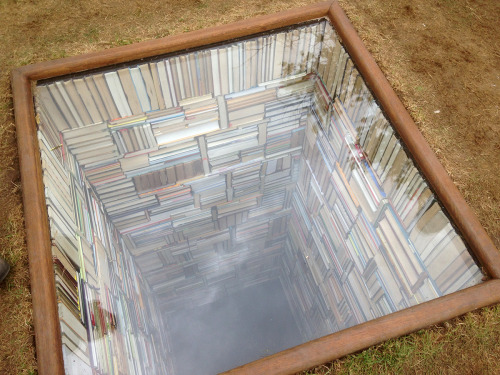

Art:
Susanna Hesselberg, “When My Father Died It Was Like a Whole Library Had Burned Down” (2015)
Photo of art:
by Claire Voon for Hyperallergic
Beautiful



Yinka Shonibare’s art installation, The American Library, in the downtown branch of the Cleveland Public Library.
It’s designed as two back-to-back rows of book stacks, with 6,000 books bound colorful fabrics. On each book’s spine is the name of a 1st or 2nd generation US immigrant who has influenced their adopted country’s culture.

The victory, Rene Magritte
Medium: oil,canvas
https://www.wikiart.org/en/rene-magritte/the-victory-1939
This is amazing; we often personify various parts of our body. But little did we know, that it turns out our body personifies itself.
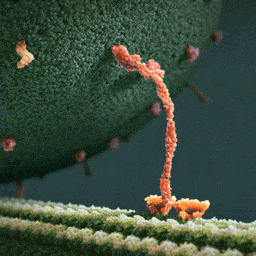
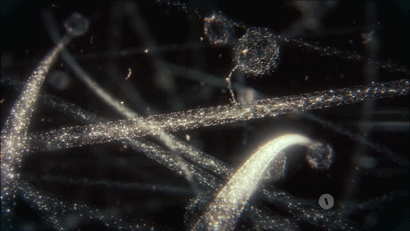
Your body is an incredibly bizarre machine.
“What you see is a myosin protein dragging an endorphin along a filament to the inner part of the brain’s parietal cortex which creates happiness. Happiness. You’re looking at happiness.”
Good words to live by; beautifully said.
A Virgo once told me I can be as sad as I want just make sure I’m still doing things and that has changed the way I view everything. I’m like it’s fine that I’m sad right now but let me go be sad at hot yoga and be sad while I’m taking my vitamins and be sad while I’m learning ceramics and while I’m completing my tasks. This might sound like depressing but for me it’s so elevating. Bc I know in like, December for example I will be able to look at how much I’ve expanded myself n it won’t matter that I was sad in August because sadness doesn’t stick. It’s what u do that shapes your life. And I kept doing things. And I shaped my life
This is beautiful, you don't see these natural bridges/alcoves in the states very often.
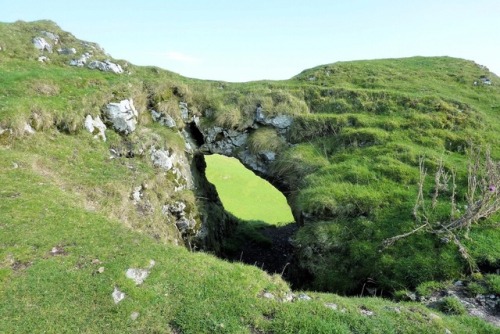
Just another reason to love apples.

APPLE: Malus pumila
In Ireland, the apple is considered one of the foods of the dead; during Samhain apples are often piled on altars and graves, giving the festival the nickname ‘the feast of apples’. Before a funeral, a coffin may be lined with apple wood to restore youth in the afterlife. During Samhain, bobbing for apples is a common game to play; if you are to capture an apple, it is symbolic of being allowed to cross over to the island of Avalon and you will be blessed for a year. Incidentally, the name Avalon is considered to be of either Welsh, Cornish, or Breton origin, from avallen, meaning ‘fruit tree’ or the old Irish aball, meaning apple.
This looks like a really cozy place to live

https://www.instagram.com/terra_naut/
Me


Reading Quirks: Too real, man.
Just ridiculous, half of those books are on required reading lists for highschool/college level English literature classes.
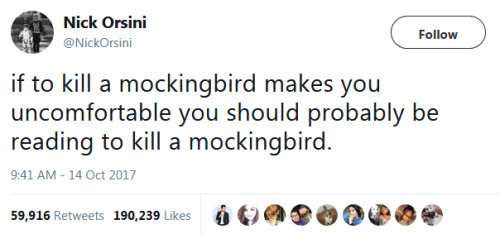

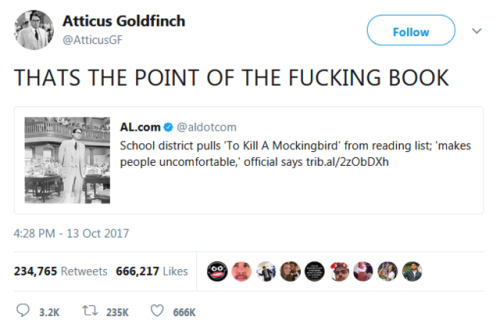
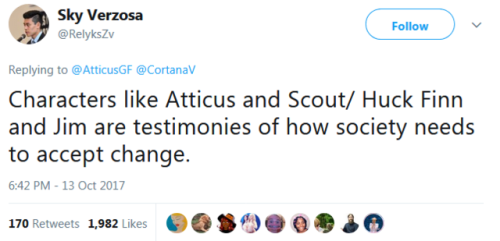







The sign of high quality is the fact the book was banned by the government. Trash literature NEVER EVER had any troubles with the law.
Beautiful cover on a true classic

Book of the Day
“The Metamorphosis and Other Stories” by Franz Kafka
Love this!
Bookwyrm
There is a bookwyrm in the library.
Note the spelling. Not a bookworm. A bookwyrm.
No one is entirely sure when it snuck into the Elsewhere University Library, but one thing has become entirely certain: it is never, ever leaving.
And why should it leave, with a veritable unlimited floor plan filled to the bell tower with delicious, fragrant tomes to claim and hoard and sample.
An ink-black serpentine wyrm that originally was not much bigger than a rabbit, it used to scamper here and there in the library looking for open tomes to slurp the words out of (it is a terribly messy eater, much to the librarians’ chagrin). The words it eats etch themselves somewhere onto its dark hide, though it has consumed so many letters in so many languages that it is difficult now to see where new bits of prose are added.
Students have been warned repeatedly over the years not to feed the bookwyrm. But there are always those who do not heed the warnings of the librarians. It used to be a funny pastime for students that had become stuck in one section or another of the library’s labyrinthine stacks to feed scraps of paper with vulgar words to the then tiny bookwyrm and then try to find where the offending epithets manifested. The bookwyrm was not terribly picky about the words it ate back then, because it was always hungry. Whether they were in good taste or bad, it didn’t matter; its appetite was insatiable.
And this kind of recklessness is why it grew so large in such a, relatively, short amount of time. It sprang up to the size of a cat one semester, then a large dog a year later, and then eventually… well, to the point where it’s a very good thing that the library has a mostly Other architecture, because it surely would have burst the building by now. And the bigger it grew, the more territorial it became. The more it hoarded tomes in certain sections (it really seemed to savor Anne McCaffrey’s works, but would never be found anywhere near Hemingway, for example). The more aggressive it became to students and librarians alike who needed the books also.
Hoping to avoid another calamity like the last wyrm that took up residence on the campus, the librarians decided to make good use of their new pet. With a copious amount of parchment and ink, they lured the bookwyrm down down down deep into the seldom used catacombs of The Library and set it to work. They knew that once it was presented with its new collection that it would never stray far from it again. And there it stays.
It was a constant conundrum that the librarians faced in the early days, when the Fair Folk and students were beginning to… mingle. A place filled with a vast amount of knowledge like The Library is always bound to have certain… archives that are better perused by no one. Ancient texts. Tomes of ages, dated further back than it is currently recorded that written word existed. The language of the birds, poetry of the stars, and truths that would shatter the mind. Words that needed to be preserved but not necessarily studied. Not by the Good Neighbors, and certainly not by incoming freshmen. Absolutely not by school administrators.
A tiny bit of such knowledge is dangerous. A little more is a disaster. Lots of that knowledge, though, would present a crisis of cataclysmic proportions. These are the books, bound in iron and chains, locked with enchantment and dusted with bottled oblivion, that the wyrm keeps. Guards. Claims. Hoards.
Not all words fade with time. Some grow sharp teeth and attack from the dark instead.
So if you are lost in the library and find yourself in a place that is blacker than spilled ink, smells of iron and sulfur, and sounds like an ancient bellows, turn around and leave out the way you came.
Yesterday, if possible (which, in The Library, of course, it always, always is).
I love the rain also, especially the smell and sound. But like other things it can sometimes overstay it's welcome.

The rain always calms me a bit.
This looks like a good read

Book of the Day
“Banshees, Werewolves, Vampires and Other Creatures of the Night” by Varla Ventura

We are ignorant of the meaning of the dragon in the same way we are ignorant of the meaning of the universe, but there is something in the dragon’s image that fits man’s imagination, and this accounts for the dragon’s appearance in different places and periods.
Jorge Luis Borges

Remember my friend, that knowledge is stronger than memory, and we should not trust the weaker.
Bram Stoker, Dracula

Book of the Day
“Bestiary” by Donika Kelly
Would love to see these in person.







Kelly Campbell Berry